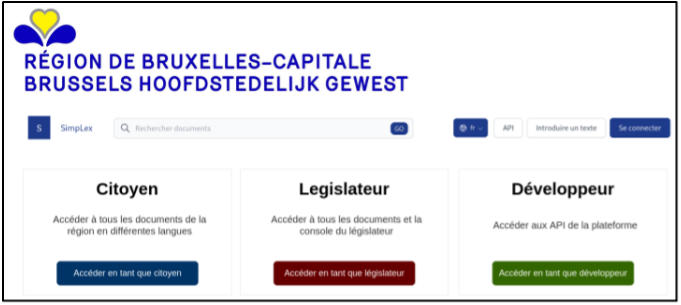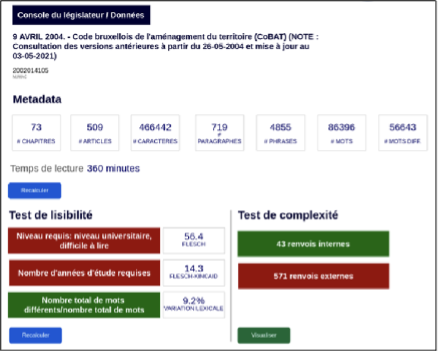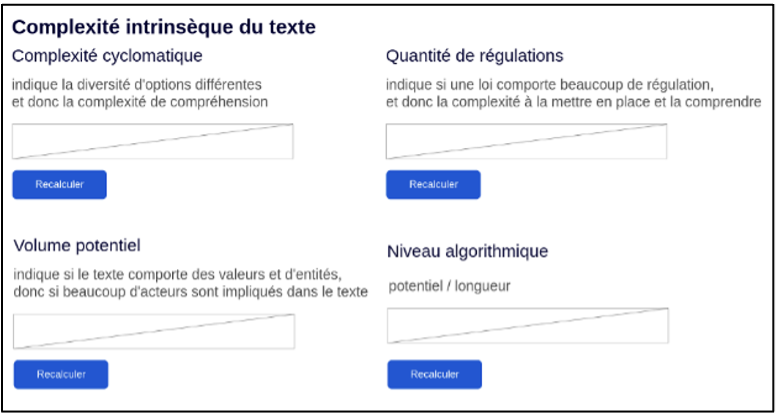The FARI Conference returns on 17 and 18 November in Brussels, find out more.
An Initiative of
Supported by

SimpLex or Administrative Simplification in the Digital Age
Author
Valentina Dalla Giovanna

Foreword. We wish to thank Professor Gregory Lewkowicz who kindly granted us an interview. Professor Lewkowicz leads the Brussels pilot project SimpLex and without him, the writing of this article would not have been possible.
No one is supposed to be ignorant of the law? Law concerns everyone, as it allows the organization of life in society, and in that, it is fascinating. Paradoxically and quite criticizably, the law is also unnecessarily complex and difficult to access for the citizen. The one who would like to become acquainted with, understand the law that applies to them, and comply with it, quickly finds themselves trapped in a labyrinth and often abandons any further attempt at understanding (1).
State of affairs in the Brussels-Capital Region. Contrary to the Flemish Region, the French Community and the Walloon Region, which have their own databases (respectively “de Vlaamse Codex”, “Gallilex” and “Wallex”), the Brussels-Capital Region does not have its own legal database and thus still relies exclusively on the Belgian Official Gazette for managing its texts. Furthermore, a large number of legal texts are not published (e.g. ministerial circulars, additional rules from municipalities in matters of urban planning) or are published but with significant delays. This difficult access to regional law is well known to documentalists who, when preparing a file for parliamentarians to present the state of legislation, will: (i) go on Justel and test 8 different departments (ii) if they find nothing, they will still consult the BOG, (iii) then, they use 44 filters on Reflex to ensure there is no text they missed, then (iv) they still check the websites of the municipalities, of Editoria, of Brulocalis, of Be.Brussels. This situation is far from ideal.
The SimpLex Pilot Project. It is from this observation and within the framework of the Easy Way plan (2) that the regional pilot project SimpLex was born. In the words of Professor Lewkowicz, the project “aims to build a regional database of Brussels legislation as well as artificial intelligence tools to promote a simpler, more inclusive, and more effective law.”
Legacy: How to reduce current complexity? It was therefore a matter of identifying the constraints imposed on administrations, targeting inefficiencies, and reducing the complexity of legal texts (both in their drafting and in their implementation). Until now, to assess the complexity of a text, in substance, the citizen and/or legislator had only the following measurement tools: number of pages, titles, sections, chapters, articles, paragraphs, sentences, and words. Now, it becomes possible to create artificial intelligence tools and to approach the question of complexity more pertinently in order to reduce it.
Step 1 – The establishment of a legal platform for Brussels
The establishment of a legal platform for Brussels under project provides three different accesses (the access reserved for citizens, the access reserved for the legislator which allows to carry out tests and complexity measurements and, finally, the access reserved for developers. The latter can access in open data the data to build applications).

Mission of identification and extraction: let’s go!
It was necessary to obtain an agreement with the Ministry of Justice to extract automatically and in real time (and thus updated) the relevant data from the Belgian Monitor and also proceeded to the “copy” or dump of Justel.
Conversion of raw text into a standardized machine-readable language.The persons working on the project converted the texts in raw format. They then structured the texts in standardized format Akoma Ntoso (3) (XML format specially designed for legal documents in the broad sense) by partially automating this standardization.
There are various advantages to using the same standard, notably the following:
- The format allows to contain in the file itself all versions of the same legal text and it becomes easier to navigate between the different versions of a successively amended text.
- The standard allows interoperability.
- It also becomes easier to compare different national or regional texts (the same tags being used for a list, a title, an article, a chapter, etc., and no need to understand the national language to grasp the targeted legal text).
- For the consideration of a new European directive, such a format allows to quickly identify the parts of a text to be modified in domestic law.
- This allows to easily apply SimpLex stylesheets and consequently to generate “nice” PDFs for the desired version of the legal text.
- This offers the possibility to more easily generate beautiful web pages with interactive tables of contents.
- This facilitates the application and development of artificial intelligence tools to legal matters. The tags provided by the Akoma Ntoso standard allow the machine to identify the structure of the text. It becomes easier, for example, to generate unofficial translations of legal texts, which makes sense in one of the most cosmopolitan cities in the world and strengthens access to law.
Step 2 – Establishment of complexity scores of the writing itself of the rule
The illustration below corresponds to the SimpLex console reserved for the legislator. One finds there a series of metadata that allow to assess the complexity of drafting the legal text. The designers of the project also designed tools to carry out complexity tests. They either used existing tests (e.g., Flesch readability test, targeting of similar expressions by cosine similarity calculation), or developed new tests. SimpLex allows to visualize complexity via graphs.

It was necessary to annotate the legal texts to teach the machine what internal and external references are (e.g., towards European law) and thus identify them on a large scale.
The project designers re-trained a language model to give effective value to the principles of once-only and technological neutrality. The once-only principle consists of simplifying administration by following the principle that the administration should not ask the citizen or businesses or users to provide information they already possess (e.g., legal domicile, BCE number, etc.). The principle of technological neutrality is the principle according to which the State should not impose a preference (e.g., registered mail over email) for or against a given technology. The computer tests developed allow to test, a priori and a posteriori, the conformity of texts to these major principles. Other tests are also conceivable to promote administrative simplification.
Step 3 – Establishment of complexity scores of the rule itself (ongoing)

This phase aims to identify the intrinsic complexity of the rule (how many actors are involved in the application of the rule? What is the complexity of the logical structure of the rule? etc.).
For that, we arrive at the phase of transformation of the legal text into a coded version of it (e.g., in Python programming language), if applicable, with the help of large language models.
There are fields where the rule is, in practice, already translated by computer scientists into machine-executable form (e.g., the banking or financial sector) and where the automatic application of a law fits perfectly with the legislator’s objective. However, and unlike the previous version (written in XML format), here the nuance of language can be lost and one risks locking in the rule or seeing unintended effects if applied blindly. Certain terms like “necessary”, “reasonable”, “good faith” are indeed not translatable into machine-executable language.
However, having a machine-executable version remains relevant if we want to measure the intrinsic complexity of a rule
________
[1] Identification of the article or articles of law applicable to a given situation? Number of amendments? Has the amended version entered into force? Verification of the meaning of the terms used in the dictionary. Terms of the law specified in another regulatory text, discovery of new legislation more appropriate to apply to one’s situation, etc.
[2] For more information, visit the site: https://easy.brussels/easy-way-vers-une-bruxelles-simplifiee-en-2025/.
[3] For more information, visit the site: http://www.akomantoso.org/.
[4] Method applying design thinking to law.
Share
Other news